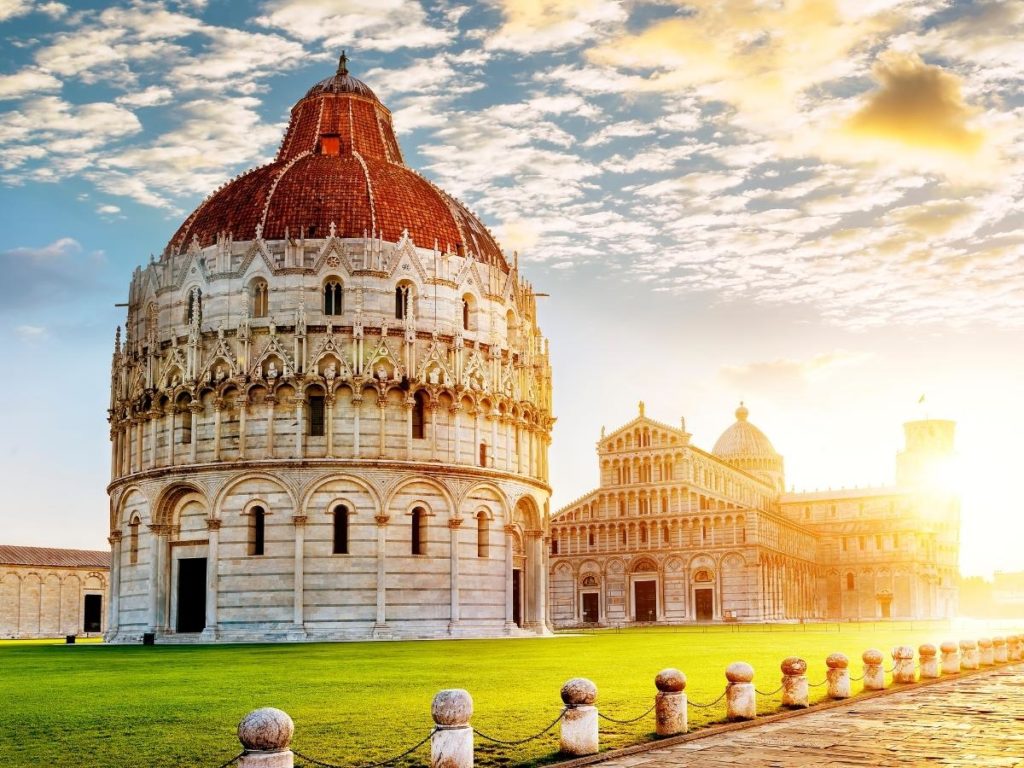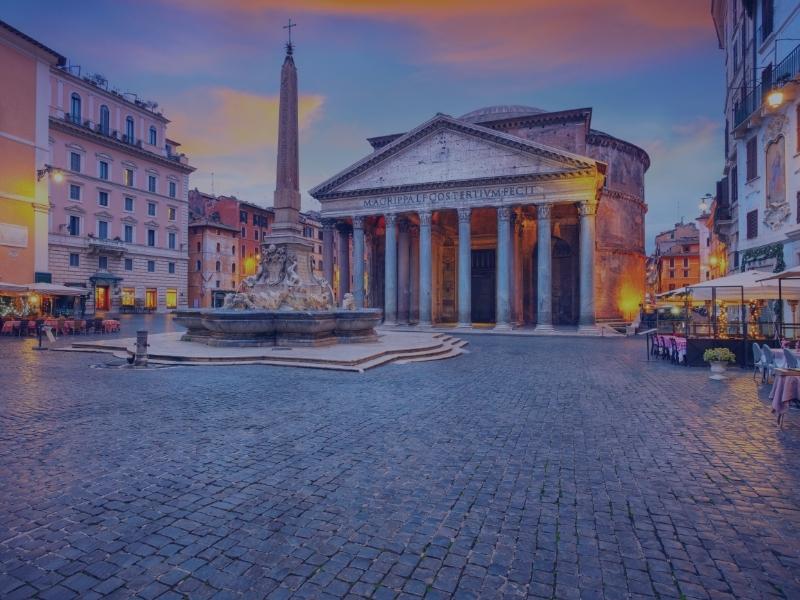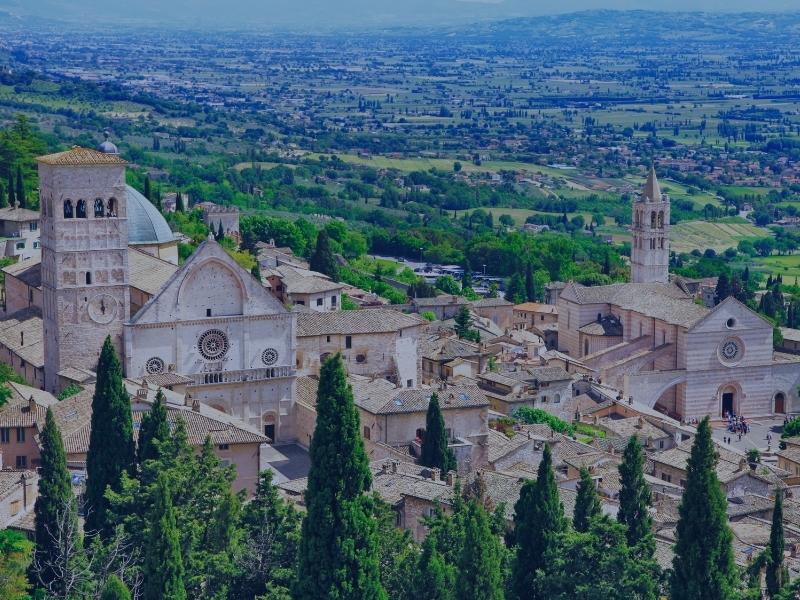One day tour
If you want to discover the Italian beauties, sit back and enjoy them! You can choose whether to be accompanied by our drivers who speak English or if you want to have a guide at your side who will show you the local beauties in English. All our drivers have years of experience and love Italian history, art and tradition!
Private service, large vans, great drivers, private groups, extreme flexibility, for a unique experience!
Let’s go visit the most beautiful Italian cities! Contact us, we will only make you happy.
Rome
Rome is one of the most extraordinary cities in the world. Its history and its art blend perfectly, giving those who visit it an ever new emotion. Among its most important monuments there are certainly the Colosseum, Trevi Fountain, San Pietro, the Pantheon, Piazza Navona and Piazza di Spagna.
The Colosseum
The Colosseum is without doubt the most important and famous amphitheater in Rome, looking great and impressive that attracts the eyes of many tourists, located in the heart of the Italian capital was able to accommodate 50,000 spectators. It’s origins date back to the imperial age, specifically during the reign of Vespasian, but the inauguration of the amphitheater was under Titus in 80 AD and subsequent contributions to the complex also followed with Domitian. It’s main use was to represent you demonstrate – that both met the favor of the people, fond of parties – and the performances of the gladiators. Significant changes of the monument have especially during the Middle Ages, starting for example from its name, which becomes Coliseum (originally, in fact, it was called Amphitheatrum or Flavian Amphitheatre), resulting from the statue of the Colossus of the Sun God – that is the statue of ’emperor Nero in bronze. A view of the ColosseoIn below, from the sixth century, it was used as a burial space as well as a castle until the first repairs were necessary due to the various financial difficulties suffered by the monument in time. In the nineteenth century excavations were carried out to free up the inside of the Colosseum and in the twentieth century was reached with the excavations to the underground parts of the arena.
Trevi Fountain
The Trevi Fountain is the largest and most famous fountain in Rome. The theme of the sculpture is the sea and was designed by Nicolò Salvi, who took inspiration from Baroque and from what Bernini. The construction of the fountain, which is located on one side of Palazzo Poli, began in 1732 as part of the arrangement of the square and was inaugurated by Pope Clement XII in 1735 while the work was still in progress. The fountain is one of the most important tourist destinations of the capital and every day is admired by thousands of visitors, in keeping with the tradition, throw a coin in the fountain turn away because it is said to bring good luck and to ensure the return to the Eternal City. The coins collected by the municipality of Rome in the fountain are used for charitable works. The cinema has often used the beauty and fame of the Trevi fountain to shoot scenes later become famous both in Italy and abroad. In the “Dolce Vita” by Federico Fellini, Anita Ekberg bathing in the tub and invites Marcello Mastroianni to do the same. In Tototruffa 62, there is a hilarious and unforgettable scene that sees Toto undertaken to sell to an inexperienced and gullible tourist Italian-American Trevi Fountain along with the copyright for the pictures taken by visitors.
St. Peter Church
A trip to Rome must necessarily include a visit to the Basilica of St. Peter, with a total area of about 23,000 square meters, is the largest church in the world. History of St. Peter’s Basilica: The Basilica is located in Vatican City and is completely inserted into the urban fabric of Rome, with its 0.44 km² in area and about 900 inhabitants is the smallest independent state in the world. The construction of the church took 120 years and was finished in 1626 during the pontificate of Pope Urban VII. The imposing structure is the same place where the Roman Emperor Constantine I in the fourth century, he built the first church on the site where tradition holds that Peter was buried, one of the apostles of Jesus the ancient Constantinian basilica today there are only some representations artistic. The church is enriched by the beautiful and famous St. Peter’s Square that was built by Gian Lorenzo Bernini in the years 1656-1667.
- 1 - 3 passengers - 180 euro
- 4 - 6 passengers - 240 euro
- 7 - 8 passengers - 280 euro



Amalfi coast
Departure from Rome, where our driver will be your service will take you on tour on the beautiful Amalfi Coast, a tourist destination known throughout the world. The Amalfi Coast is also known as the Amalfi Coast and Amalfi coast, just for the beauty almost divine nature of the marine environment which it is located.
The area is also famous bell for its diversity: each of the countries that are part of it has its own characteristics and traditions. The territory of the Amalfi Coast, in fact, includes the towns of Vietri Sul Mare, Cetara, Maiori, Sunsets, Minori, Ravello, Scala, Ravello, Amalfi, Conca dei Marini, Furore, Praiano and Positano.
The name comes from the town of Amalfi Coast, as it is at the heart of the area not only geographically but also historically. As you travel along the motorway Salerno-Reggio Calabria will be at least one stop at the Coffee Break service stations. Through Vietri sul Mare, famous for its ceramics, you will arrive to Amalfi, one of the most important tourist centers of the Campanian coast, known and appreciated throughout the world for its artistic and natural beauty, clean sea and fine accommodation. The most famous monument, the Cathedral of Amalfi is certainly in the Arab-Sicilian style and currently dedicated to St. Andrew, patron of the city. The Cathedral of Amalfi is made up of two churches: the Basilica of the Crucifix, very old, dating to the sixth century and the major basilica dedicated to St. Andrew, dating from the ninth century. To the left of the facade of the cathedral rises the bell tower, built between the twelfth and thirteenth centuries., With mullioned windows decorated with yellow and gray tuff tuff arches topped by braided, supported by columns with star and floral motifs reminiscent of the Arabic style. The atrium of the Cathedral of Amalfi leads to the enchanting Paradise Cloister, built by Bishop Philip Augustariccio between 1266 and 1268 to be used as a burial ground of notable families of Amalfi. The breathtaking scenery, history, art and cuisine of Amalfi will certainly win you over. In Mill Valley, in the inner city you can visit the Museum of the Charter, an old mill into a museum in 1969 by Nicola Milani. The museum, one of the most original and fascinating of the Coast, home to the ancient machinery and equipment used to make paper by hand hammers the battery, the Dutch machine, the machine level, machines that have been properly restored and made functional again.
From Amalfi the tour will continue for the town of Ravello on the Amalfi Coast to the roof terrace from which there is a setting of unique natural beauty. The terraces of Villa Rufolo and Villa Cimbrone, from which you can admire a magnificent view, fascinated and even the actress Greta Garbo, the great composer Wagner, in honor of which, every year, is held the International Music Festival, which made the city of Ravello on the Amalfi Coast Music. The garden of Villa Rufolo, also known as the Garden of the Soul, is on two levels. The ancient walls just hidden by cypress and lime trees, leading to a fairly Moorish cloister. Villa Cimbrone was a large land holdings of the noble family Acconciagioco, on which stood a large rustic farmhouse built on a rocky promontory overlooking the Amalfi Coast. In 1904, the English lord William Beckett became the owner and in collaboration with Nicola Mansi of Ravello was able to erect a building of incredible splendor of mixing styles and eras, antique artifacts and ethnic elements, memories of exotic travel.
The lush gardens of the villa, where there are statues, temples, fountains, grottoes and gorges crafted, culminating in the spectacular viewpoint of the “Terrace of Infinity”, which opens to the charming scenery of the Gulf of Salerno and the coastal resorts close. Ravello also recommend you visit: the Cathedral (ninth century), whose bronze doors, executed in 1179 in Constantinople, and “reach their destination by sea” such as the cathedral of Amalfi, Ravello and the Holy Saviour Cathedral of Salerno, is divided into 54 panels depicting saints, Stories of Passion, lions and griffins, and the Church of Santa Maria in Gradillo (XI century), a small church with a basilica with three apses, the Coral Museum, founded in 1986 and contains artifacts coral, cameos, engraved mother of pearl and shells, from Roman times to the last century. You can end your tour with a brief stop in Positano and then back to your Hotel in Rome
- 1 - 3 passengers - 590 euro
- 4 - 6 passengers - 670 euro
- 7 - 8 passengers - 730 euro


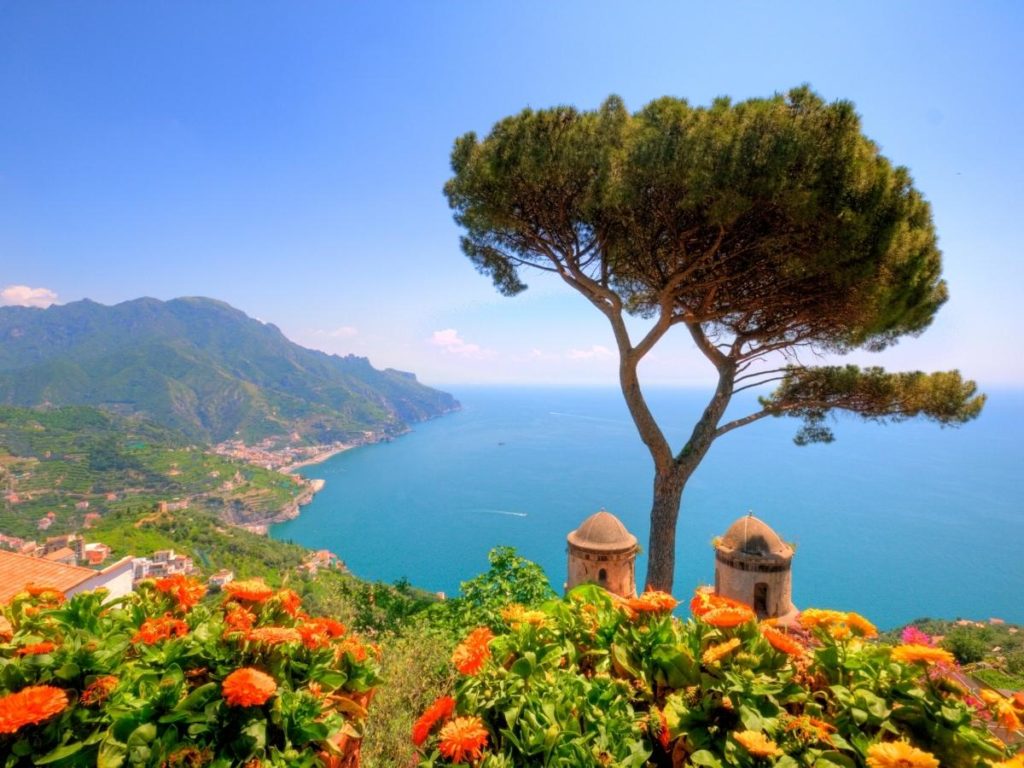
Florence
Departure from Rome, where our driver will be your service will take you on tour on the Florence, a tourist destination known throughout the world. Home to famous figures such as Dante, Boccaccio and Machiavelli, who contributed to the birth and development of the Italian language and culture, Florence is full of places, churches and museums to visit. It is like a precious diamond necklace of resorts in Tuscany. Works great and esteemed artists such as Brunelleschi, Botticelli, Michelangelo, Leonardo and Donatello, make Florence one of the cultural capitals of the world.
Despite the flooding that struck in 1966, the city retains a heritage of inestimable value, accumulated above all between the fourteenth and sixteenth century, the period when it experienced its greatest growth.
The first place where you will be taken once you arrive in Florence, is the Piazza del Duomo, in the city center. Here are some of the most important religious buildings in Florence: the Baptistery, the Duomo, or cathedral, S. Maria del Fiore, Giotto’s Bell Tower. The cathedral is a work of great artists: Arnolfo di Cambio, who started the construction in 1296, Giotto, who oversaw the work in the fourteenth century, Filippo Brunelleschi, author of the famous dome 90 meters high; Lapo Ghini, Francesco Talenti, Emilio De Fabris and many others. The outer shell is made of white Carrara marble, red marble of Siena and green marble from Prato, the lantern on top of the dome was installed in 1461, while the façade was completed only in 1886. Worthy of admiration are the beautiful stained glass windows and the mechanical clock still works. The interior of the church is a must-play with wonderful frescoes, sculptures and a wonderful marble floor. The artists who contributed to enrich the Cathedral of Florence are numerous, among many others we can mention: Paul Bird with equestrian fresco dedicated to Sir John Hawkwood, known as the “Equestrian Monument of John Hawkwood” Giorgio Vasari, author of ‘” The Last Judgement “(fresco on the dome), performed with Federico Zuccaro, and a well-known fresco inspired by Dante’s Divine Comedy and, Andrea del Castagno, Luca della Robbia and Benedetto da Majano, author of the Crucifix altar (1497 ). A few steps from the church of Santa Maria del Fiore, Giotto’s Bell will, bell tower of the Cathedral of St. Maria del Fiore. The bell tower is 5 storeys high 82 m. wide and 15 m and has been decorated with the same colored marbles that decorate the cathedral. It was begun by Giotto in 1334, at the invitation of the Lord and, after his death, the project was continued by Andrea Pisano until 1348 and completed in 1359 by Francesco Talenti, who built a large terrace, where you can admire an enchanting panorama. The Baptistery, dedicated to St. John the Baptist, the patron saint of the city, is located opposite the Cathedral and is one of the oldest buildings in Florence. Until 1128 it was the cathedral of Florence. A octagonal baptistery is covered with slabs of white marble and green Prato. The dome is divided into eight segments. The three gilded bronze doors are by Andrea Pisano, author of the oldest port, the south, and Lorenzo Ghiberti, author of the door and the door in North East latter was called by Michelangelo “Gates of Paradise” because of the ‘exceptional beauty. The Baptistery of St. John was to give hospitality to the baptismal font of the Cathedral; internally is characterized by the splendor of mosaics covering the entire dome and the vault of the tribune. Most of the furnishings of the Baptistery, including the “Maddalena” by Donatello, the most valuable works together with other sacred buildings of Piazza del Duomo are now kept in the Museum Opera del Duomo also called by St. Maria del Fiore and located behind the cathedral.
From the Piazza del Duomo to Piazza della Signoria Tour will continue, dominated by the imposing Palazzo Vecchio, and where you will find some of the most important works of the city of Florence, the splendid Loggia della Signoria, the great fountain of Ammannati Bartholomew (1563-1575) with the center of the imposing figure of Neptune, called “Il Biancone”, the equestrian statue of Cosimo I, excellent work in bronze by Giambologna (1598), and the famous “David” by Michelangelo (1503) located to the left of the Palazzo Vecchio (the ‘original work is housed in the Accademia Gallery), while the right is the marble group of “Hercules and Cacus” by Baccio Bandinelli (1533). Old Palace of the Signoria, or is the Town Hall since 1872 and was designed by Arnolfo di Cambio (1298-1314). Over the centuries has always been the political center and has therefore become the symbol of the city. The interior is richly decorated by the greatest artists of the Italian Renaissance. The Loggia dei Lanzi Loggia della Signoria or houses inside, like a precious window, some masterpieces of office: “Perseus” of Benvenuto Cellini, “The Rape of the Sabine Women” and “Hercules fighting the Centaur Nessus with” both the Giambologna, “Judith and Holofernes” and the famous “David” (the ‘original is preserved in the Museum of the Bargello) works by Donatello, who also designed the “Marzocco”, lion symbol of the Florentine Republic. On the right of the Palazzo Vecchio opens the courtyard of the Uffizi Gallery, one of the most prestigious museums in the world, built in 1560 by Giorgio Vasari was commissioned by Grand Duke Cosimo I de ‘Medici to house the administrative and judicial offices of the Florentine state. The museum now an immense artistic heritage, including thousands of pictures ranging from medieval to modern times, a large number of ancient sculptures, miniatures and tapestries. Among the masterpieces to admire: the “Birth of Venus” by Botticelli, the “Holy Family” by Michelangelo, and portraits of Federico da Montefeltro and his wife, works of Piero della Francesca. Important are also the collections of German, Dutch and Flemish, including Dürer, Rembrandt and Rubens. Behind the Palazzo Vecchio, the city’s east end, is the Basilica of Santa Croce, one of the most important Franciscan churches in Italy. Inside it retains, as well as beautiful frescoes by Giotto and the tombs and monuments of illustrious Florentine and Italian artists, including Michelangelo, Ugo Foscolo and Rossini. There is also a cenotaph in honor of Dante Alighieri, whose remains, as is known, is located in Ravenna, where the Florentine poet was in exile. Along the banks of the Arno, returning to the Uffizi Gallery, Ponte Vecchio encounter. The bridge remained unscathed by the bombing of World War II, is the oldest in Florence. It was built in 1345, at the narrowest point of the Arno River that runs through the city, by Taddeo Gaddi and is also a symbol of Florence. Ahead could see the gleaming windows of the old Florentine goldsmith shops. At the center of the bridge is a square the sides of which there are two terraces: one is facing the Piazzale Michelangelo, the hill of S. Illuminated and the Uffizi, and is closed at the top of the Vasari Corridor that connects the Uffizi to the Pitti Palace, the other overlooking the bridge of S. Trinity, the center has a bust of Benvenuto Cellini created by Raffaele Romanelli and placed here in 1900. Continue straight after crossing the bridge, you arrive at the Pitti Palace, once the splendid villa of the Medici, now one of the most important art galleries in the world. The large park that stretches behind the building is the Boboli Gardens. And ‘This is one of the earliest examples of an Italian garden, then those that inspired many European courts of the time. The original garden (of 1549), was designed by the sculptor Niccolò Pericoli, known as Tribolo, then the work was continued by Ammannati, Buontalenti and finally by Alfonso Parigi.
To continue your tour in Florence you should visit, depending on your interests: the Archaeological Museum, the Museum of the Bargello, which are collected in the original versions of the most important sculptures, or the National Museum of the History of Science (in square de ‘Giudici) a collection of works, projects, inventions and ancient tools of the scientist Galileo. Finally, for your shopping in Florence we suggest in addition to the Ponte Vecchio and the numerous boutiques that dot the city: the New Market said the Pig, the famous sculpture depicting a boar by Tacca and artisan market in San Lorenzo.
- 1 - 3 passengers - 550 euro
- 4 - 6 passengers - 630 euro
- 7 - 8 passengers - 720 euro


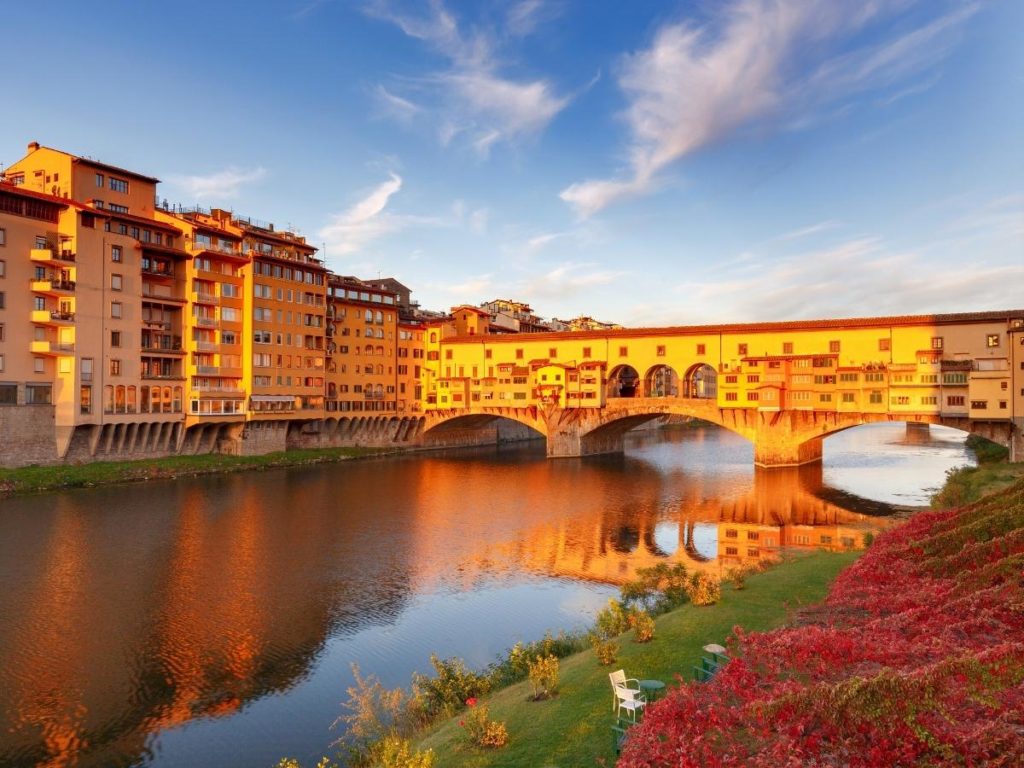
assisi
Departure from Rome, where our driver will be your service will take you on tour on the Assisi a tourist destination known throughout the world. Umbria is the innermost region of central Italy. Washed by the Tiber River and its tributaries, is distinguished by its beautiful hilly landscape, which appears as a painting. The ancient Romans reached through the Via Flaminia, which crossed from Narni to Foligno.
Just under Roman rule, which began in 295 BC, Umbria, reached his first splendor. From 568 to 1247 was the seat of the Lombard Duchy of Spoleto, but the region reached its maximum in the communal exuberance and elegant. In the sixteenth century it became part of the dominions of the Pope and remained there, except for the Napoleonic period, until the unification of Italy. Umbria, therefore, is closely linked to the history of Rome and wherever they are found the traces. Take the E45 to Assisi.
You can make a stop at the motorway or in a bar for a coffee break, then resume the trip, which will last approximately 2 hours and 40 minutes. Assisi is known throughout the world for the memory of St. Francis (1182-1226), patron of the city, of Italy and numerous foreign cities including San Francisco, USA. Assisi is still breathes a strong mystical-religious atmosphere. People from all over the world every day, go on pilgrimage to the saint’s tomb, the crypt of the Basilica of St. Francis, you have a chance to visit during your Full Day Tour. The first place of prayer in which we make a stop is the magnificent basilica of Santa Maria degli Angeli, situated where St. Francis organized the Franciscan Order and where the saint died October 3, 1226. Inside the majestic basilica, began to build at the end of ‘600, there is the “Portiuncula”, the third church to be repaired after the St. Francis calling. The facade has been painted by the painter Friedrich Overbeck Nazarene in 1830. Near it is the Chapel of the Transit, built on the site where St. Francis spent the last moments of life.
Moving away with your private car from the village of Santa Maria degli Angeli, you climb to Assisi, situated on the slopes of Mount Subasio. Travelling in the direction of the height you can see the mighty walls of the “Sacred Convent” that surround the Franciscan basilicas and once at the top, you can admire the wonderful Umbrian plain of the Valley, which overlooks the city. Visit the old town: the Duomo, the Basilica of Santa Chiara Romanesque-Gothic, which contains the tomb of the saint and the crucifix of San Damiano, and finally the splendid Basilica of San Francesco. It consists of a crypt with the tombs of the saint and some of his disciples, and two churches: the Lower Basilica and the Basilica Superiore, best known for the 28 frescoes on the Life and Miracles of St. Francis painted by Giotto in 1297 to 1300. After visiting Assisi, you can have lunch in a local restaurant and taste typical Umbrian dishes. To choose the restaurant you can of course seek advice from our driver. In the afternoon departure for the came back Rome
- 1 - 3 passengers - 390 euro
- 4 - 6 passengers - 450 euro
- 7 - 8 passengers - 490 euro



Pisa
Departure from Rome, where our driver will be your service will take you on tour of the beautiful Pisa, a tourist destination known throughout the world.
You will be immediately conducted in the most famous of Pisa: Piazza dei Miracoli. Here you will find the symbol of the city, one of the most important buildings of the art world: the Tower of Pisa, you can visit and where you can admire the city from above. Miracle Square was the center of religious life, it contains in addition to the Campanile, or Leaning Tower, the Cathedral of Santa Maria Assunta, the Baptistery of San Giovanni Battista and the Monumental Cemetery. A masterpiece of Pisan Romanesque style, the Cathedral (1064-1118) represents the very richly decorated prestige achieved by the ancient maritime republic of Pisa in the twelfth century. Inside, the coffered wooden ceiling is painted with gold, while the apse is decorated with a large mosaic with “Christ in Majesty” complete with the head of St. John of Cimabue in 1302 and miraculously survived the fire of 1595. Worthy of note is the beautiful pulpit (1302-1310) by Giovanni Pisano. The Baptistery, started building in 1152, is the largest baptistry in Italy. Inside you can admire the octagonal font, surmounted by a statue of St. John, Guido Bigarelli from Como and the pulpit carved by Nicola Pisano. The Campo Santo of Pisa is the ancient cemetery, in which are preserved Roman sarcophagi, statues, carvings, tombs of famous people and famous frescoes of the “Triumph of Death” (1336 approx) Buonamico Buffalmacco. You can continue your tour to Pisa and visit the Piazza dei Cavalieri, ancient seat of the civil power, where you will find the Palace with the famous clock tower of Count Ugolino, the Caravan Palace, home of the Scuola Normale Superiore of Pisa, founded by Napoleon in 1810, the Church of the Knights of St. Stephen and other buildings of historical importance. Then you can walk the ancient Borgo Strait to reach the Arno river and the Ponte di Mezzo under which flows the River Arno. After crossing the bridge, the Lodges of the benches, where they are often prepared food fairs and flea markets, antiques.
- 1 - 3 passengers - 690 euro
- 4 - 6 passengers - 750 euro
- 7 - 8 passengers - 820 euro

